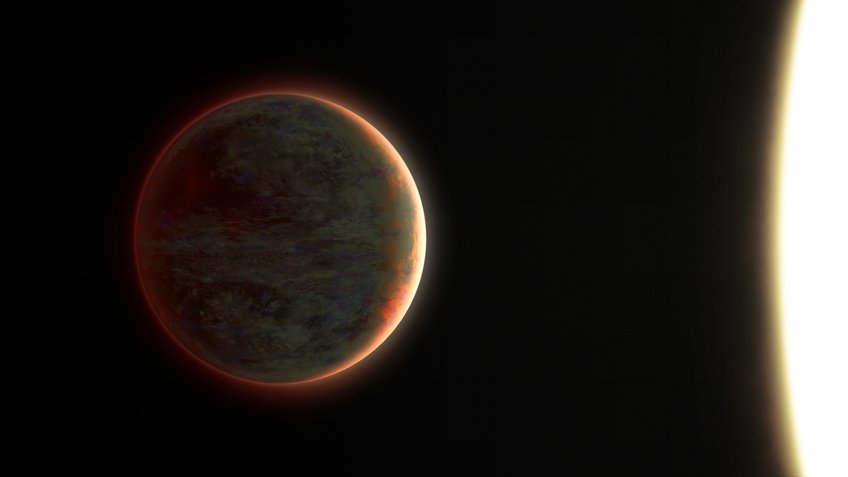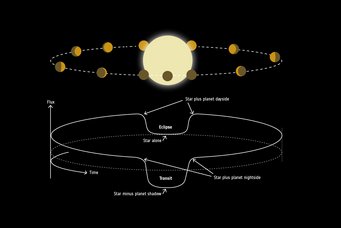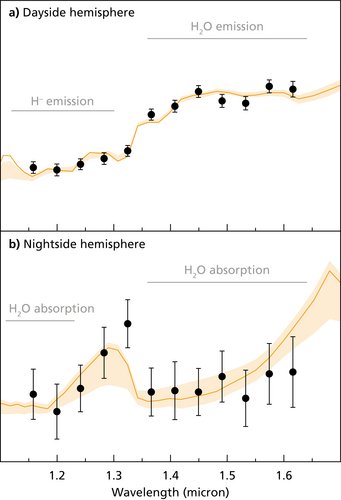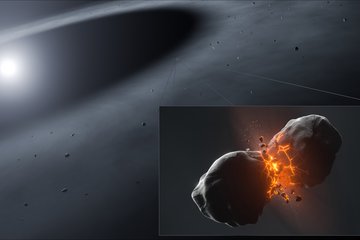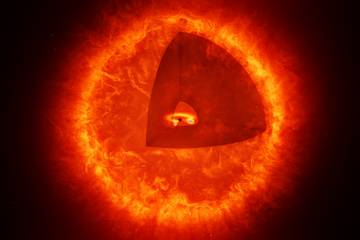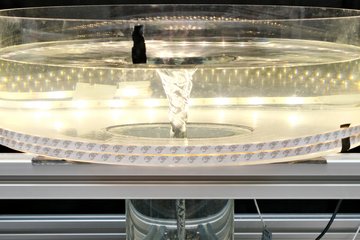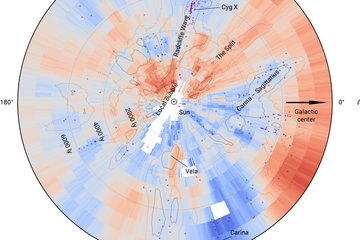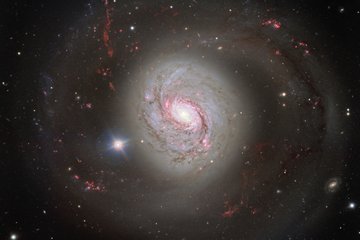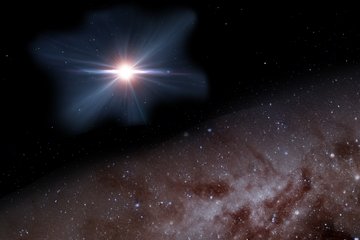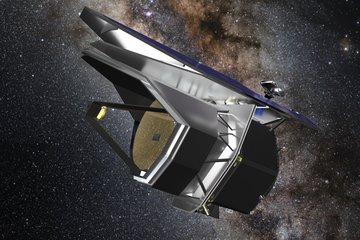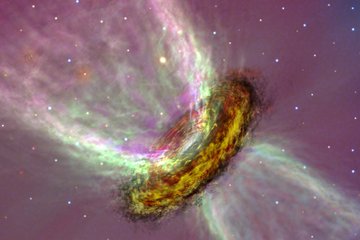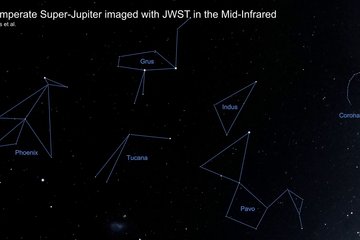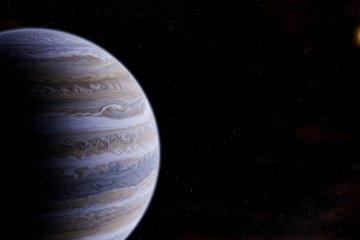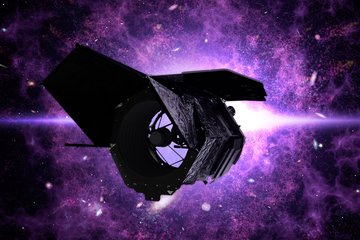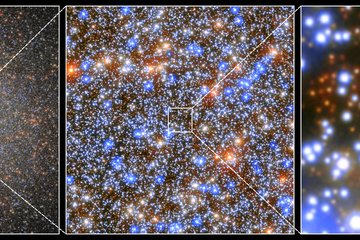An exotic water cycle and metal clouds on the hot Jupiter WASP-121 b
Astronomers explore the unusual atmospheric conditions and alien weather phenomena of a hot exoplanet
A group of astronomers, led by Thomas Mikal-Evans from the Max Planck Institute for Astronomy, have made the first detailed measurement of atmospheric nightside conditions of a tidally locked hot Jupiter. By including measurements from the dayside hemisphere, they determined how water changes physical states when moving between the hemispheres of the exoplanet WASP-121 b. While airborne metals and minerals evaporate on the hot dayside, the cooler night side features metal clouds and rain made of liquid gems. This study, published in Nature Astronomy, is a big step in deciphering the global cycles of matter and energy in the atmospheres of exoplanets.
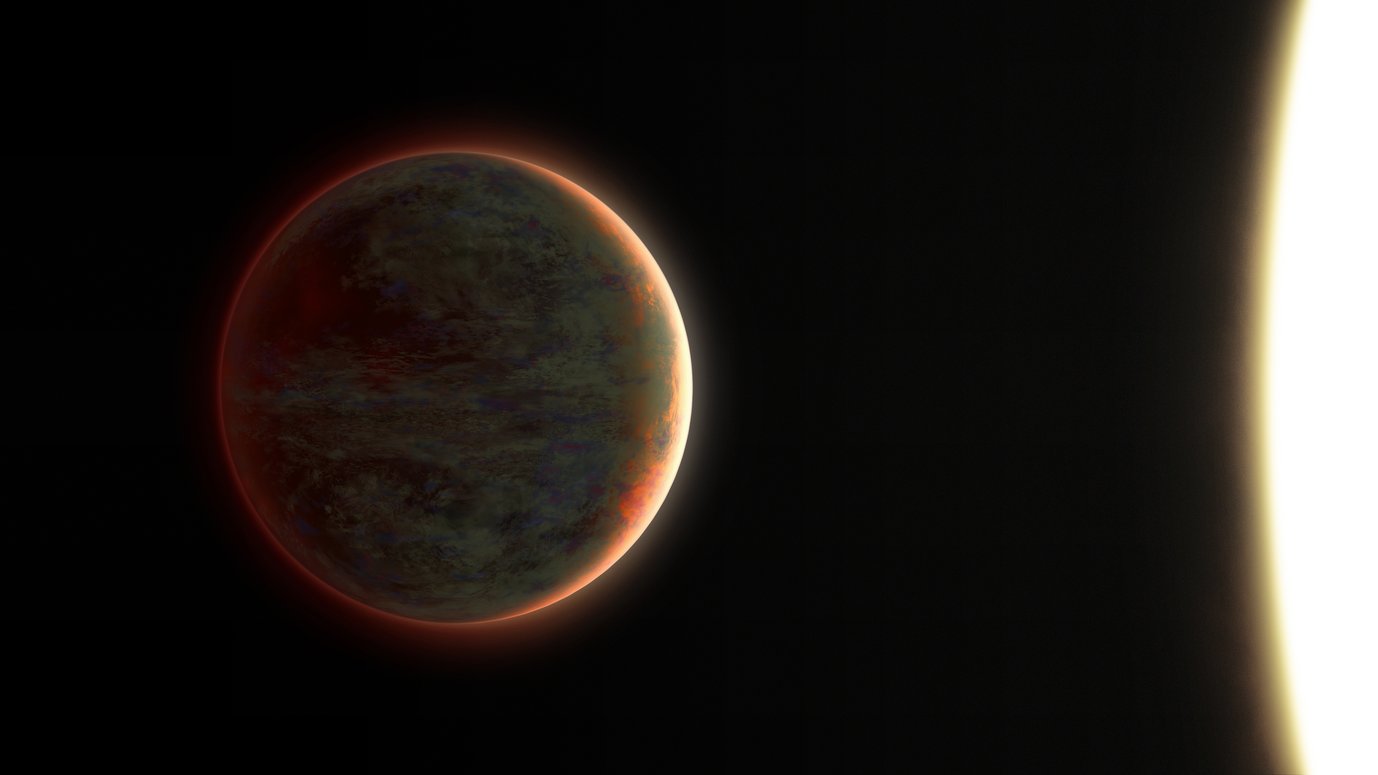
The first discovery of an exoplanet orbiting a Sun-like star more than 25 years ago introduced a new and exotic class of planets, a hot Jupiter. Hot Jupiters are Jupiter-like giant gas planets on close orbits around their parent stars, separated by only a few stellar diameters. Due to their proximity, the irradiation from the star heats the planet to several hundred to a few thousand degrees Celsius. Of the almost 5000 known exoplanets, more than 300 are such hot Jupiters.
Using the Hubble Space Telescope, an international collaboration of scientists led by Thomas Mikal-Evans from the Max Planck Institute for Astronomy (MPIA) in Heidelberg, Germany, investigated the atmospheric properties of the hot Jupiter WASP-121 b. Astronomers had discovered this exoplanet in 2015 in the constellation Puppis at a distance of 855 light-years. Its mass is about 20% greater than that of Jupiter, while WASP-121 b has a diameter that is nearly twice as large.
“Despite the discovery of thousands of exoplanets, we’ve only been able to study the atmospheres of a small fraction due to the challenging nature of the observations,” Mikal-Evans points out. “So far, most of these measurements have provided limited information, such as basic details on the chemical composition or average temperature in specific subregions of the atmosphere.”
The most detailed exploration of an exoplanet’s nightside environment
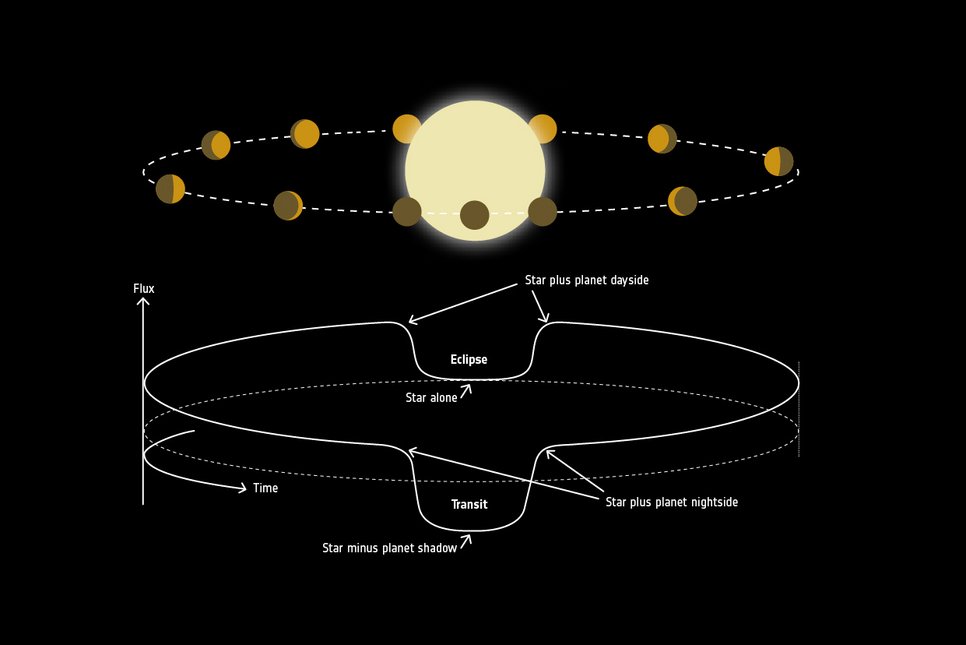
The new observations allowed the astronomers to obtain the most detailed insight yet into the conditions of an exoplanet nightside hemisphere. Like all hot Jupiters, WASP-121 b’s rotation is tidally locked to its orbit around its parent star. Hence, one 30-hour orbit around the star requires the same amount of time as the planet needs to rotate once on its axis. As a result, the hemisphere pointing towards the star always suffers the roasting hot stellar surface. Likewise, the cooler night side constantly faces the cold and dark space. By merging the data from the dayside and nightside hemispheres, the team’s analysis leads to the first elaborate view of how an exoplanet atmosphere functions as a global system.
“To probe the entire surface of WASP-121 b, we took spectra with Hubble during two complete planet revolutions,” co-author David Sing from the Johns Hopkins University in Baltimore, USA, explains. With this technique and supported by modelling the data, the group probed the upper atmosphere of WASP-121 b across the entire planet and, in doing so, observed the complete water cycle of an exoplanet for the first time.
The exotic water cycle on WASP-121 b
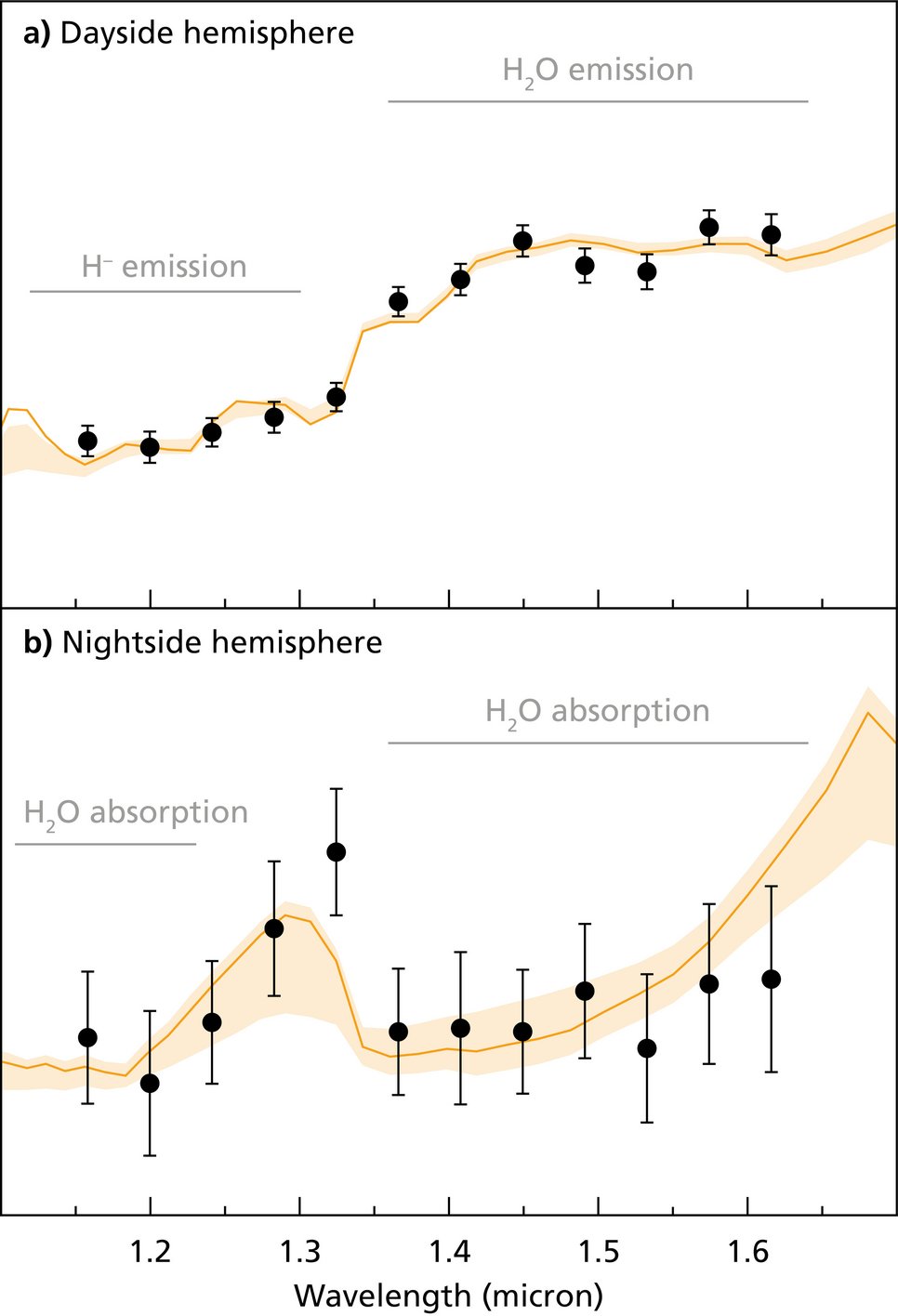
On Earth, water constantly changes its physical state. Solid ice melts into liquid water. Water evaporates into a gas and then condenses into droplets to form clouds. The cycle closes when those droplets grow to raindrops that eventually fall down to fill rivers and oceans. However, the new Hubble data reveal a water cycle on WASP-121 b that looks completely different.
On the side of the planet facing the central star, the upper atmosphere becomes as hot as about 3000 degrees Celsius. At such temperatures, the water begins to glow, and many of the molecules even break down into their atomic components. The Hubble data also reveal that the temperature drops by approximately 1500 degrees Celsius on the nightside hemisphere. This extreme temperature difference between the two hemispheres gives rise to strong winds that sweep around the entire planet from west to east, dragging the disrupted water molecules along. Eventually, they reach the nightside. The lower temperatures allow the hydrogen and oxygen atoms to recombine, forming water vapour again before being blown back around to the dayside and the cycle repeats. Temperatures never drop low enough for water clouds to form throughout the cycle, let alone rain.
Metal clouds and rain made of liquid gems
Instead of water, clouds on WASP-121 b mainly consist of metals such as iron, magnesium, chromium and vanadium. Previous observations have revealed the spectral signals of these metals as gases on the hot dayside. The new Hubble data indicate that temperatures drop low enough for the metals to condense into clouds on the nightside. The same eastward flowing winds that carry the water vapour across the nightside would also blow these metal clouds back around to the dayside, where they again evaporate.
Strangely, aluminium and titanium were not among the gases detected in the atmosphere of WASP-121 b. A likely explanation for this is that these metals have condensed and rained down into deeper layers of the atmosphere, not accessible to observations. This rain would be unlike any known in the Solar System. For instance, aluminium condenses with oxygen to form the compound corundum. With impurities of chromium, iron, titanium or vanadium, we know it as ruby or sapphire. Liquid gems could therefore be raining on the nightside hemisphere of WASP-121 b.
Prospects with the James Webb Space Telescope
“It’s exciting to study planets like WASP-121 b that are very different to those in our Solar System, because they allow us to see how atmospheres behave under extreme conditions,” co-author Joanna Barstow of The Open University in Milton Keynes, UK, says. Mikal-Evans adds, “To better understand this planet, we’re going to observe it with the James Webb Space Telescope within the first year of its operation.” By covering wavelengths beyond Hubble’s range, these observations will allow the team to determine the amount of carbon in the atmosphere, which could hold clues about how and where WASP-121 b formed in the protoplanetary disk. The measurements will even be precise enough to learn about the wind speeds at different altitudes inside the atmosphere.
Additional information
The team consists of Thomas Mikal-Evans (Max Planck Institute for Astronomy, Heidelberg, Germany; Department of Physics and Kavli Institute for Astrophysics and Space Research, Massachusetts Institute of Technology, Cambridge, MA, USA [MIT]), David K. Sing (Department of Earth & Planetary Sciences and Department of Physics & Astronomy, Johns Hopkins University, Baltimore, MD, USA), Joanna K. Barstow (School of Physical Sciences, The Open University, Milton Keynes, UK), Tiffany Kataria (Jet Propulsion Laboratory, California Institute of Technology, Pasadena, CA, USA), Jayesh Goyal (National Institute of Science Education and Research (NISER), HBNI, Jatni, Odisha, India; Department of Astronomy and Carl Sagan Institute, Cornell University, Ithaca, NY, USA [Cornell]), Nikole Lewis (Cornell), Jake Taylor (Institute for Research on Exoplanets, Department of Physics, Université de Montréal, Montréal, Canada; Department of Physics (Atmospheric, Oceanic and Planetary Physics), University of Oxford, Oxford, UK), Nathan. J. Mayne (Physics and Astronomy, College of Engineering, Mathematics and Physical Sciences, University of Exeter, Exeter, UK), Tansu Daylan (MIT; Department of Astrophysical Sciences, Princeton University, Princeton, NJ, USA), Hannah R. Wakeford (School of Physics, University of Bristol, Bristol, UK), Mark S. Marley (Lunar and Planetary Laboratory, Department of Planetary Sciences, University of Arizona, Tucson, AZ, USA), Jessica J. Spake (Division of Geological and Planetary Sciences, California Institute of Technology, Pasadena, CA, USA)
MN
